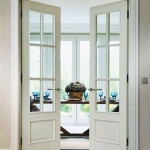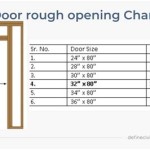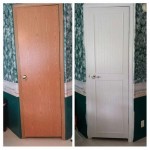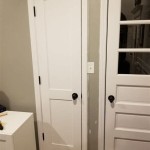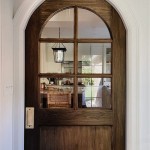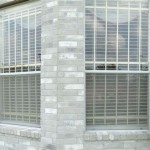How Much Does An Interior Decorator Charge?
Embarking on an interior decorating project can be an exciting endeavor, transforming a living space to reflect personal style and enhance functionality. However, understanding the associated costs upfront is crucial for effective budgeting and project management. The cost of hiring an interior decorator can vary significantly depending on several factors, including the scope of the project, the decorator's experience and location, and the chosen fee structure. This article will delve into the different pricing models employed by interior decorators, the factors that influence their fees, and provide a general overview of typical cost ranges.
Determining the final expense of an interior decorating project requires a comprehensive understanding of the pricing structures used by professionals in this field. Unlike architects or interior designers who often handle structural changes and require formal certifications, interior decorators primarily focus on the aesthetic aspects of a space, such as furniture selection, color palettes, and overall styling. Consequently, their fee structures can differ significantly. Common pricing models include hourly rates, percentage-based fees on project costs, flat fees per room or for the entire project, and markup on purchased items.
Understanding Hourly Rates
Charging an hourly rate is a common practice, particularly for smaller projects or when the scope of work is ill-defined at the outset. This model allows for flexibility, as the client pays only for the time the decorator spends on the project. The hourly rates charged by interior decorators can vary widely, influenced by their experience, reputation, and geographic location. Entry-level decorators might charge between $50 to $75 per hour, while experienced professionals in major metropolitan areas can command rates of $150 to $300 or more. This rate typically covers tasks such as consultations, space planning, sourcing materials, and overseeing installations. It's essential to establish a clear understanding of what activities are included in the hourly rate and to obtain a detailed estimate of the total anticipated hours before commencing the project.
One of the potential drawbacks of hourly rates is the difficulty in accurately predicting the final cost. The total bill can fluctuate if the project encounters unexpected challenges or if the client requests modifications along the way. To mitigate this risk, clients should maintain open communication with the decorator, regularly review the project's progress, and request periodic updates on the hours accumulated. Furthermore, a reputable interior decorator will typically provide a detailed invoice itemizing the time spent on each task, ensuring transparency and accountability.
It is also crucial to clarify whether travel time is included in the hourly rate. Some decorators may charge for travel time, particularly if the project site is located outside their regular service area. Similarly, expenses such as parking fees or mileage may be billed separately. Thoroughly reviewing the contract and discussing these details beforehand can prevent misunderstandings and budget overruns.
Percentage-Based Fees: A Share of the Project Cost
Another popular pricing model involves charging a percentage of the total project cost, encompassing the cost of furniture, materials, and labor. This approach is often preferred for larger projects where the decorator is responsible for managing the entire process from conception to completion. The percentage typically ranges from 10% to 20%, with the exact figure depending on the complexity and scope of the project, as well as the decorator's experience and expertise. This model incentivizes the decorator to manage the budget effectively, as their compensation is directly tied to the overall expenditure.
When employing a percentage-based fee structure, it is imperative to clearly define what constitutes the "total project cost." This should include all expenses related to the decorating project, such as furniture purchases, fabric costs, window treatments, lighting fixtures, and any labor charges associated with installation or construction. The contract should explicitly state whether the decorator's fee includes sales tax or other applicable taxes. Furthermore, clients should request detailed breakdowns of all expenses to ensure transparency and accountability.
One potential advantage of the percentage-based fee model is that it aligns the interests of the decorator and the client. The decorator is motivated to source high-quality materials and negotiate favorable prices, as this directly impacts the overall project cost and, consequently, their fee. However, clients should remain actively involved in the decision-making process and maintain oversight of the budget to ensure that expenses remain within acceptable limits.
Flat Fees: Predictability and Defined Scope
A flat fee arrangement offers the advantage of predictability, as the client agrees to pay a fixed sum for a specific set of services. This pricing model is often used for projects with a clearly defined scope, such as decorating a single room or selecting furniture for a particular area. The flat fee typically covers the decorator's time, expertise, and resources required to complete the agreed-upon tasks. However, it is crucial to establish a detailed contract that outlines the specific deliverables included in the flat fee to avoid any misunderstandings or disputes.
When negotiating a flat fee, clients should carefully consider the scope of work and ensure that all desired services are included in the agreement. This may involve providing the decorator with detailed specifications, such as room dimensions, desired style preferences, and budget constraints. The contract should also address potential scenarios, such as changes in the scope of work or unexpected challenges that may arise during the project. It should clearly outline how any additional services or expenses will be handled and whether they will be billed separately.
Flat fees can be particularly advantageous for clients who prefer a predictable budget and a well-defined project scope. However, it is essential to conduct thorough research and obtain quotes from multiple decorators to ensure that the flat fee is competitive and reflects the value of the services provided. Additionally, clients should carefully review the contract to ensure that it accurately reflects their expectations and that all key terms and conditions are clearly defined.
Markup on Purchased Items: A Commission-Based Approach
Some interior decorators charge a markup on the items they purchase on behalf of their clients, such as furniture, fabrics, and accessories. This approach essentially functions as a commission, where the decorator earns a percentage of the retail price of the goods. The typical markup ranges from 10% to 30%, although it can vary depending on the item and the decorator's pricing structure. This model can be beneficial for clients who want the convenience of having the decorator handle all purchasing and procurement tasks.
When working with a decorator who charges a markup on purchased items, it is crucial to understand the pricing policy and how it impacts the overall project cost. Clients should request a detailed breakdown of all expenses, including the retail price of each item, the decorator's markup, and any applicable taxes or shipping fees. Transparency is essential to ensure that the client is comfortable with the prices being charged and that there are no hidden costs.
To ensure competitive pricing, clients should consider researching the retail prices of similar items from other sources. This can help them gauge whether the decorator's markup is reasonable and in line with industry standards. Furthermore, clients may want to negotiate the markup percentage, particularly for large projects or when purchasing a significant volume of items. Open communication and a clear understanding of the pricing policy are essential for a successful and cost-effective collaboration.
Beyond the core pricing models, several other factors can influence the cost of hiring an interior decorator. The decorator's experience and reputation play a significant role. Highly experienced and sought-after decorators often command higher fees due to their expertise, proven track record, and established network of suppliers and contractors. The geographic location of the project also impacts costs, with decorators in major metropolitan areas typically charging more than those in smaller towns or rural areas. The complexity and scope of the project are also key determinants. A simple room refresh will generally cost less than a complete home renovation. Finally, the client's involvement and decision-making speed can affect the overall timeline and, consequently, the overall cost.
Ultimately, the cost of hiring an interior decorator is a multifaceted equation influenced by a variety of factors. By understanding the different pricing models, considering the factors that impact fees, and engaging in open communication with the decorator, clients can make informed decisions and create a budget that aligns with their needs and aspirations.

2024 Interior Designer Costs Charges Hourly Rates Fees To Hire

2024 Interior Designer Costs Charges Hourly Rates Fees To Hire

2024 Interior Designer Costs Charges Hourly Rates Fees To Hire

How Much Does It Cost To Hire An Interior Designer

Inside The Design Process How Much It Really Costs To Work With A Designer Emily Henderson

How Much Does An Interior Designer Cost

How Much Does An Interior Designer Cost In 2024 Decorilla Design

2024 Interior Designer Costs Charges Hourly Rates Fees To Hire

How Much Do Interior Designers Charge

Interior Designer Cost Fees Fixr
Related Posts

